Having dealt with basic technique, I now move on to some of the ways to make your pictures interesting and pleasing to the obsverver. There is no escaping the fact that no amount of post production work will turn mediocre subject matter into a fine photograph and there are certain features I look out for when I first choose my photographs for editing.
Action Shots
I like a picture that tell a story particularly action shots - a bird in flight, a bird foraging, a bird in a courting display, birds fighting, nesting, feeding chicks, even mouth open, singing. All add interest to your picture.
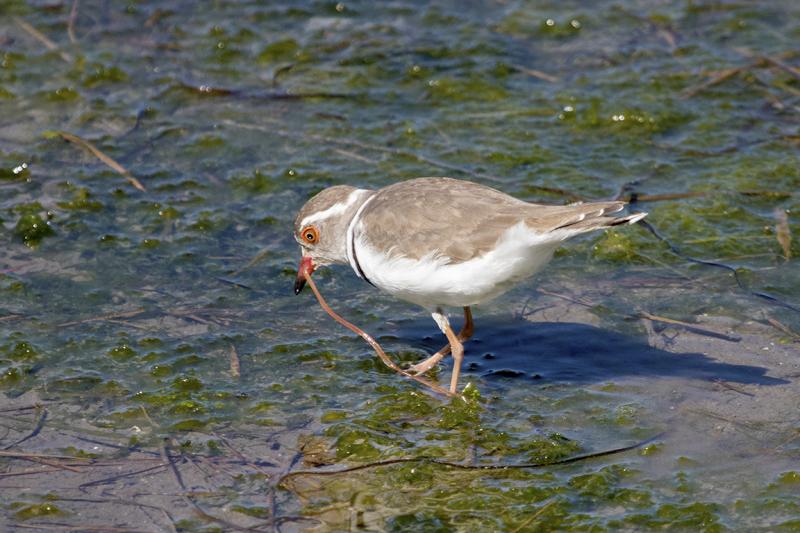
Three-banded Plover
This action shot of a three-banded plover off Leisure Isle, Western Cape, shows it dragging a juicy beach worm from its home in the sand and taking its prize to share with its chick.
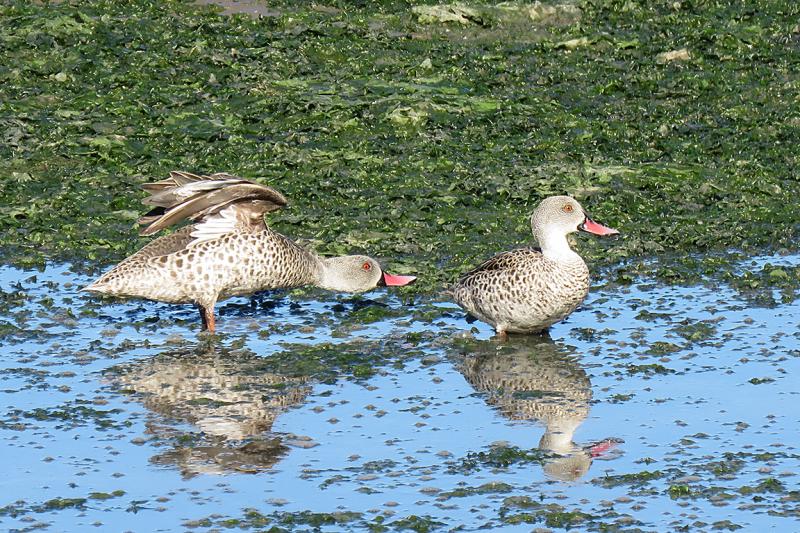
Red-billed Teal
Interaction
A domestic Squabble? Reaching out? Red-billed teal interacting on Thesen Island, Western Cape, South Africa. Two birds are often better than one particularly if they are interacting in some way.
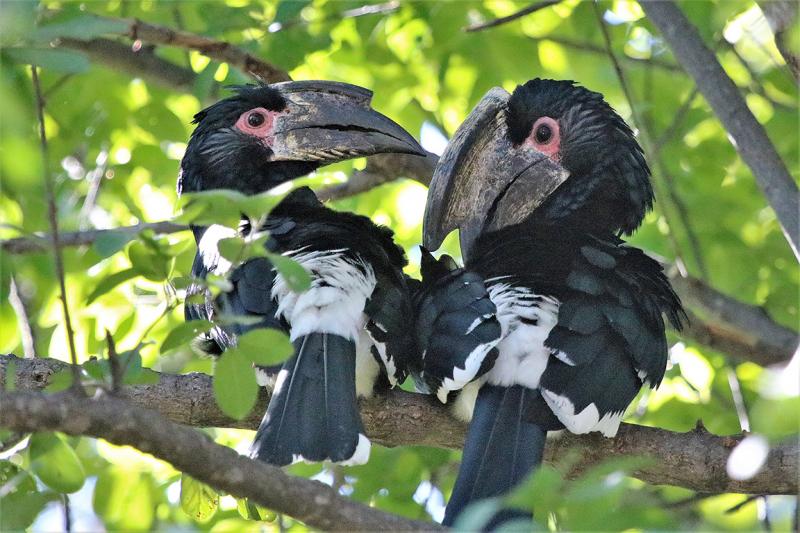
Trumpeter Hornbill
I liked the way this couple interacted on Msuna Island, Zimbabwe. I was drawn by their loud trombone like calls and was delighted after some searching to find them clearly visible in a tall tree. They kept close physical contact in their leafy hideaway and the male thoughtfully lowered his massive beak to avoid a collision with the female as she turned to look down at me.
Habitat Pictures
I also like pictures that tell me something about a bird's habitat, for instance set against a beach and sea background or the gnarled bark of a tree, or surrounded by leafy foliage.
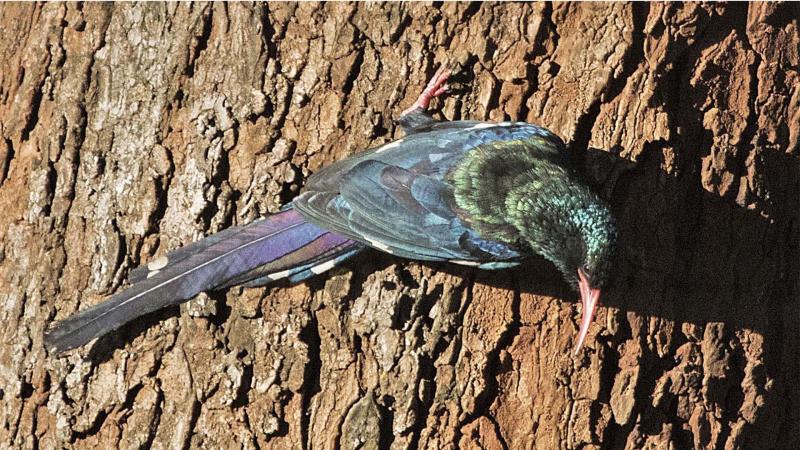
Red -Billed Hoopoe
A beautiful arboreal red-billed hoopoe set against rough, textured bark in a garden in Harare, Zimbabwe, makes an attractive contrast.
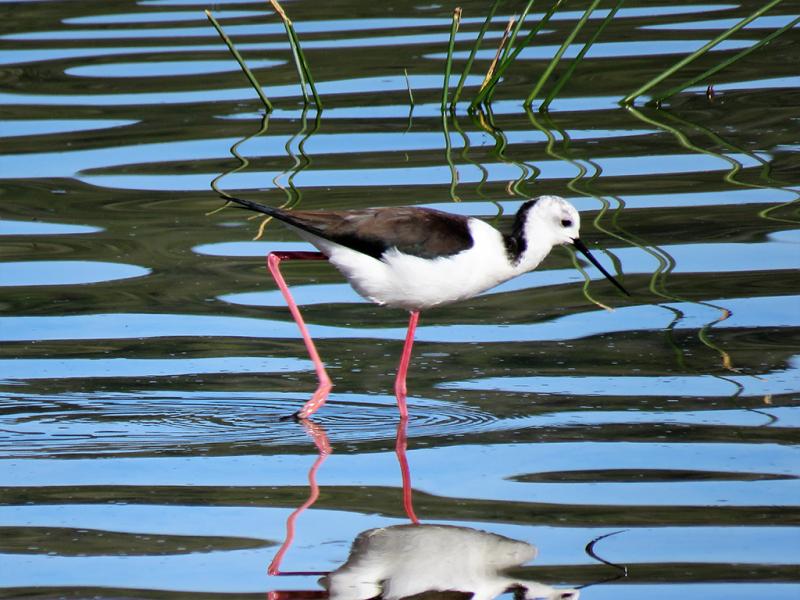
Black-winged Stilt
No doubt about this wader' s habitat with some attractive, patterned reflections created by the moving water. The bird positioned centrally with its reflection rather than to the left seemed a better composition in this case (see below).
Bokeh
There is something called "bokeh" which introduces another way of making the background interesting by turning it into a subtle, attractive blur. You need as big an aperture as you can manage with your subject well into the foreground and a distant background.
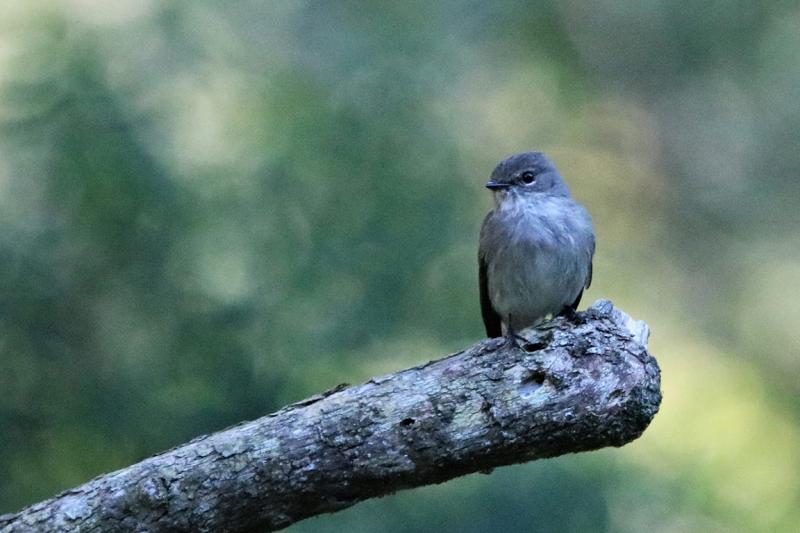
African Dusky Flycatcher.
Perched on a dead branch some distance from the dense forest vegetation behind, an African Dusky Flycatcher poses in Wilderness National Park, South Africa. Textures contrast while colours blend in this beautiful example of bokeh.
Depth of Field
Ideally you should choose the largest aperture setting (aperture priority) and let the camera choose the speed. Often you don't have time to mess with settings with a bird that is unwilling to pose for any length of time so you have to keep the shutter speed fast and let your camera decide the best aperture setting based on the amount of light available. You can be pleasantly surprised by the results. Pleasing bokeh has popped up unplanned on a number of my photographs.
At the opposite extreme, a small aperture gives you depth of field that means there is a clear picture of the background.
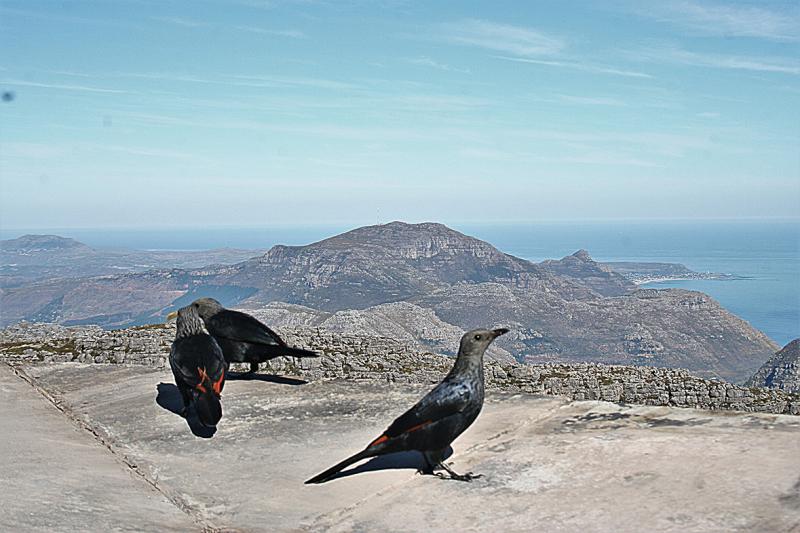
Redwing Starling
These redwing starlings stay close to the tourists and a free lunch on Table Top Mountain, Cape Town, South Africa. A small aperture enables depth of field and the panoramic view from the top of the mountain. The contrast in light in the far distance, midground and foreground was too great for a successful photograph, as is apparent from the darkened image of the bird in the foreground.
Room to Move
When I crop, I will usuallly move the bird away from the centre of the picture leaving more space in the direction it is facing, particularly if it is a moving subject. Subconsciously we don't want the bird, mammal, butterfly, human being bumping into the frame so having a subject with the space to move across the picture pleases the eye.
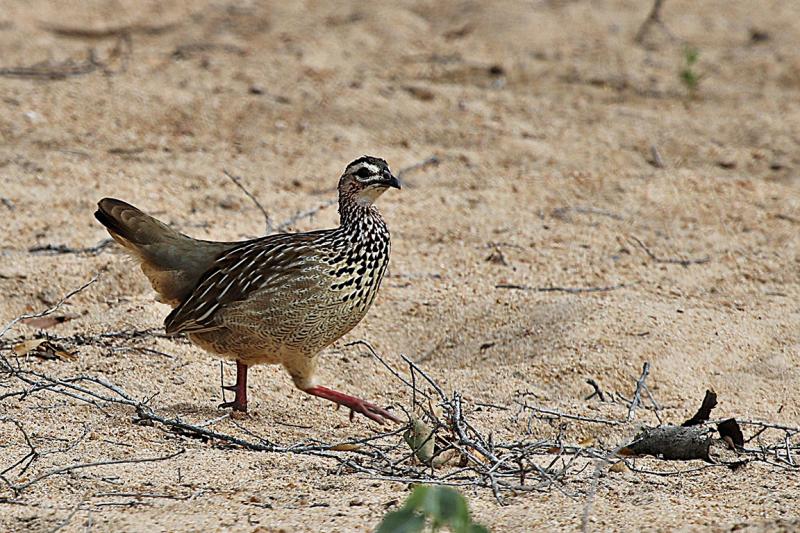
Crested Francolin
Plenty of strutting room for this crested francolin photographed in a sandy dried up water course the Kruger National Park, South Africa.
Grids
You can use the grid that usually appears before a crop to position your subject on a line or even better where lines cross. A really good app will not only provide you with the "rule of three" but also the "golden ratio" and diagonals. They all offer various permutations of lines to guide the positioning of your focal point(or points). Incidentally always aim to have the eye of the bird reflecting light as it appears more vibrant and alive. I frequently ensure the bird's eye is crossed by one of my composition guide lines. If you have two or more birds in your picture, or a bird and its reflection in water, consider a more symmetrical arrangement for your subjects in the centre of the frame.
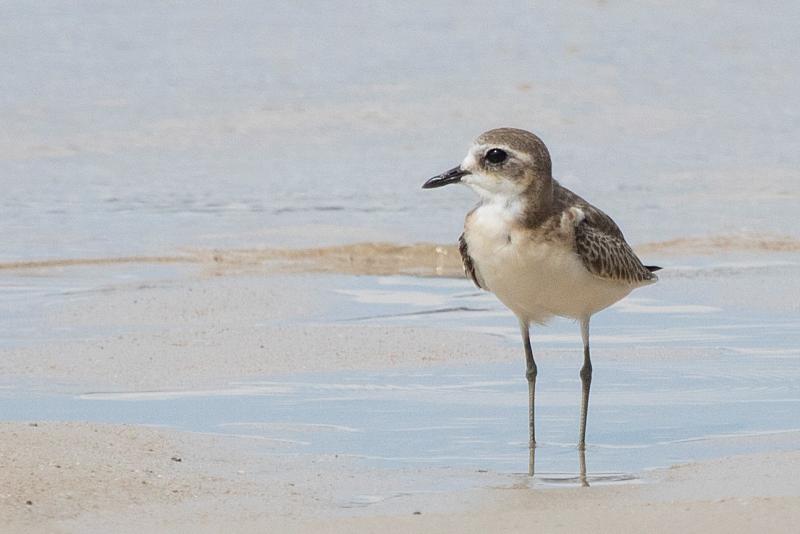
Lesser Sand Plover
Light and Eyes
A lesser sand plover in its natural habitat on Phuket Island, Thailand provides a pleasing combination of pastel shades. Note the vitality bestowed by light reflected in the eye of the bird. Contrast with the previous picture of the francolin with a "lifeless" eye.
Silhouettes
Silhouettes can create both dramatic and striking images - with a bit of luck.

Southern Ground Hornbill
I was watching three foraging southern ground hornbills from a vehicle in Kruger National Park when one suddenly flew up through the treees before descending to continue foraging. It may have been a courting display that brought on this unusual behaviour in a bird that normally prefers to walk. I took several photographs but this is the one that was the most striking, although not the best for showing the bird's plumage.
Crowd Scenes
Crowd scenes have long been favoured subject matter for artists from Breughel to Lowrie providing revealing insights into everyday life. Bird crowd scenes, can be equally interesting subject matter for the photographer and a daunting challenge when it comes to composition.
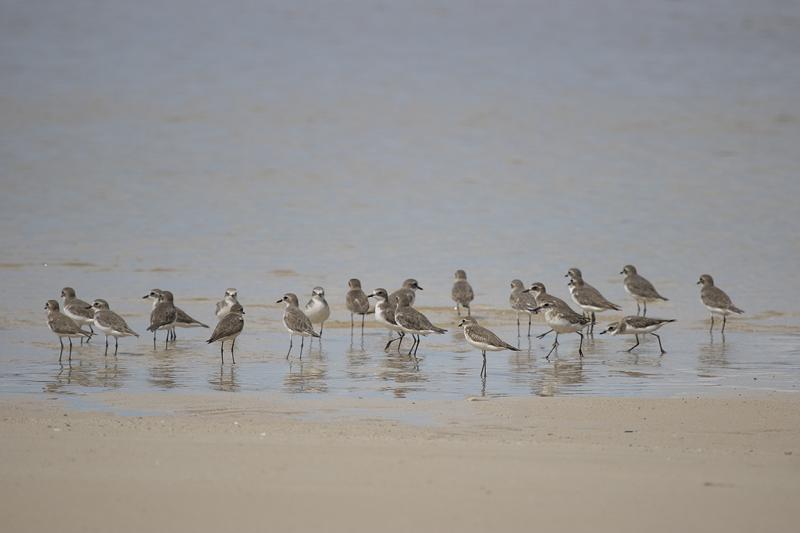
Lesser Sand Plover
Judicious cropping needed to get the balance of sea, sand and the flock of lesser sand plovers and their reflections on Phuket Island, Thailand. I was also able to trim some birds out of the picture to get a more coherent flock. The aggressive bird second from the right creates a focal point and draws the eye as its threatening posture causes two other birds to retreat. The interaction tells a story in a photograph that might otherwise lack movement although still a study in attractive pastel colours.
Fill the Frame
"Fill the frame" is an old adage advising the photographer to make sure her subject dominates the picture. Bird portraits either full length or head shots can work well because they show off plumage or reveal "character" although I may be guilty of "anthromorphism" (endowing an animal with human characteristics) when I suggest this. (Actually I do it quite often in this website, mainly because I wish to show that our avian neighbours can think, feel and interact in ways not unlike ourselves and deserve respect).
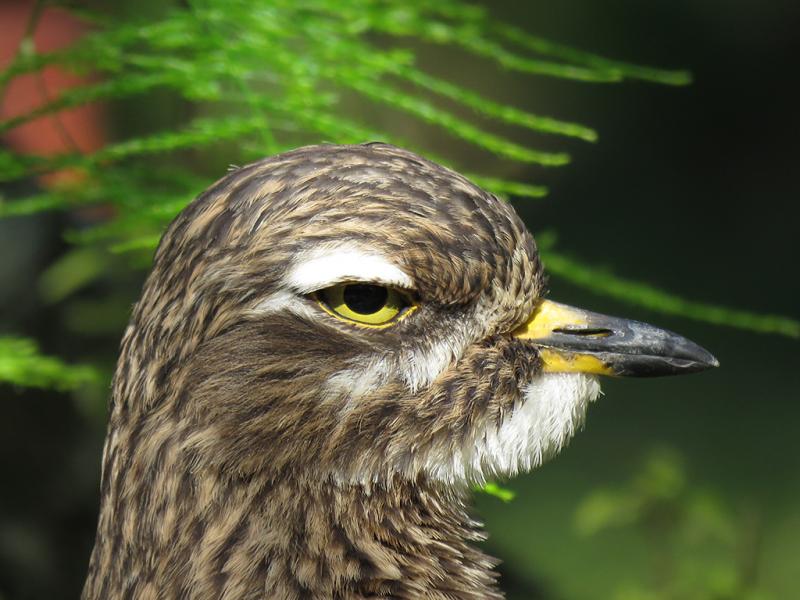
Spotted Dikkop
The jaded, world weary look of this spotted dikkop on Leisure Island, Kynsna, South Africa, reminds me of the cat Garfield from the comic strip. In fact, he's probably just a sleepy nocturnal forager not at his best in daylight hours. The blurred vegetation provides an interesting backdrop.